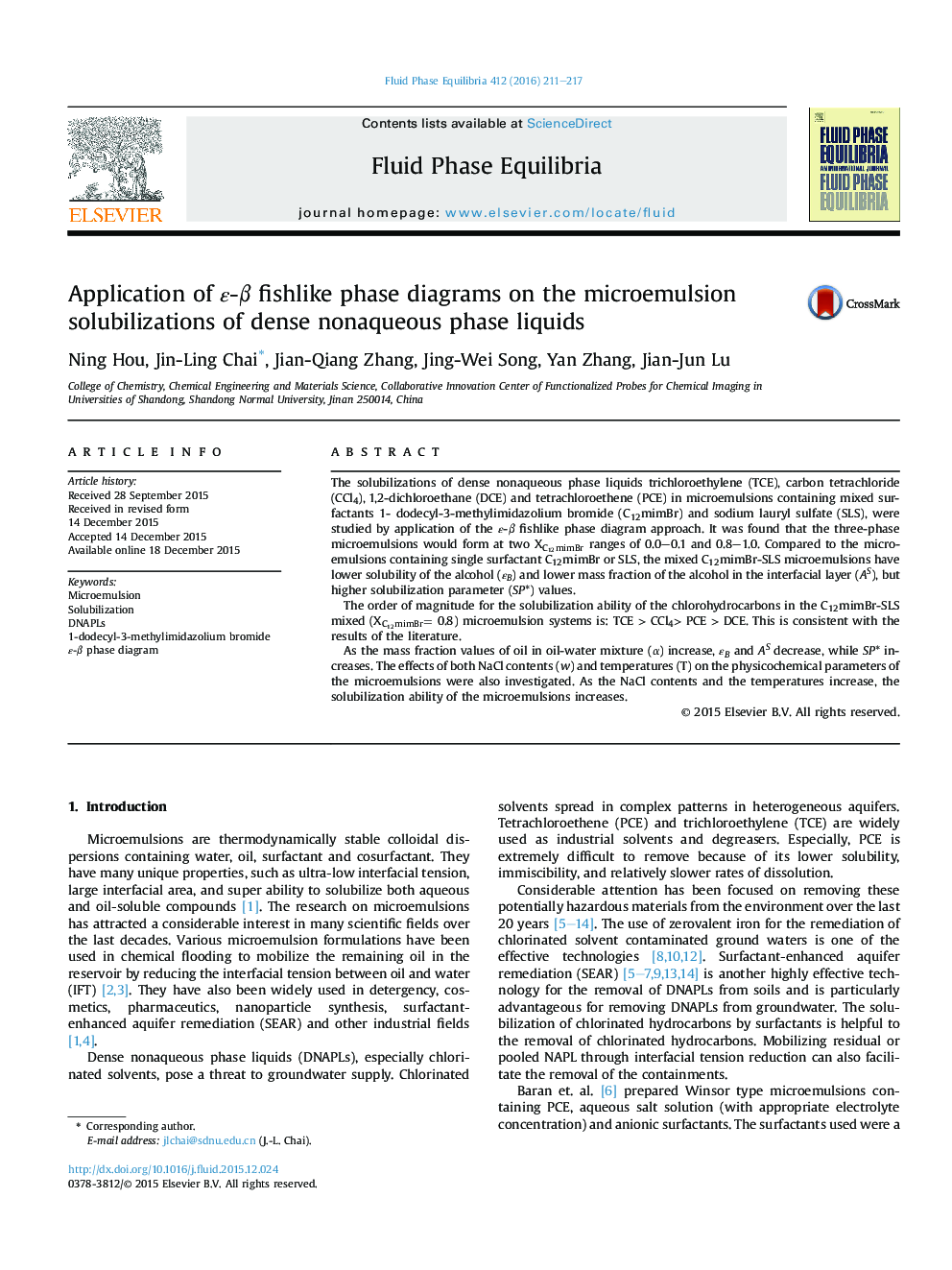| Article ID | Journal | Published Year | Pages | File Type |
|---|---|---|---|---|
| 201274 | Fluid Phase Equilibria | 2016 | 7 Pages |
•The ε-β phase diagram was used to investigate the phase behavior of microemulsions.•The solubilizations of some nonaqueous phase liquids in microemulsions were studied.•Synergistic effect between C12mimBr and SDS in the microemulsions was examined.
The solubilizations of dense nonaqueous phase liquids trichloroethylene (TCE), carbon tetrachloride (CCl4), 1,2-dichloroethane (DCE) and tetrachloroethene (PCE) in microemulsions containing mixed surfactants 1- dodecyl-3-methylimidazolium bromide (C12mimBrC12mimBr) and sodium lauryl sulfate (SLS), were studied by application of the ε-β fishlike phase diagram approach. It was found that the three-phase microemulsions would form at two XC12mimBrXC12mimBr ranges of 0.0–0.1 and 0.8–1.0. Compared to the microemulsions containing single surfactant C12mimBrC12mimBr or SLS, the mixed C12mimBrC12mimBr-SLS microemulsions have lower solubility of the alcohol (εB) and lower mass fraction of the alcohol in the interfacial layer (AS), but higher solubilization parameter (SP*) values.The order of magnitude for the solubilization ability of the chlorohydrocarbons in the C12mimBrC12mimBr-SLS mixed (XC12mimBrXC12mimBr= 0.8) microemulsion systems is: TCE > CCl4> PCE > DCE. This is consistent with the results of the literature.As the mass fraction values of oil in oil-water mixture (α) increase, εB and AS decrease, while SP* increases. The effects of both NaCl contents (w) and temperatures (T) on the physicochemical parameters of the microemulsions were also investigated. As the NaCl contents and the temperatures increase, the solubilization ability of the microemulsions increases.
Graphical abstractFigure optionsDownload full-size imageDownload as PowerPoint slide
